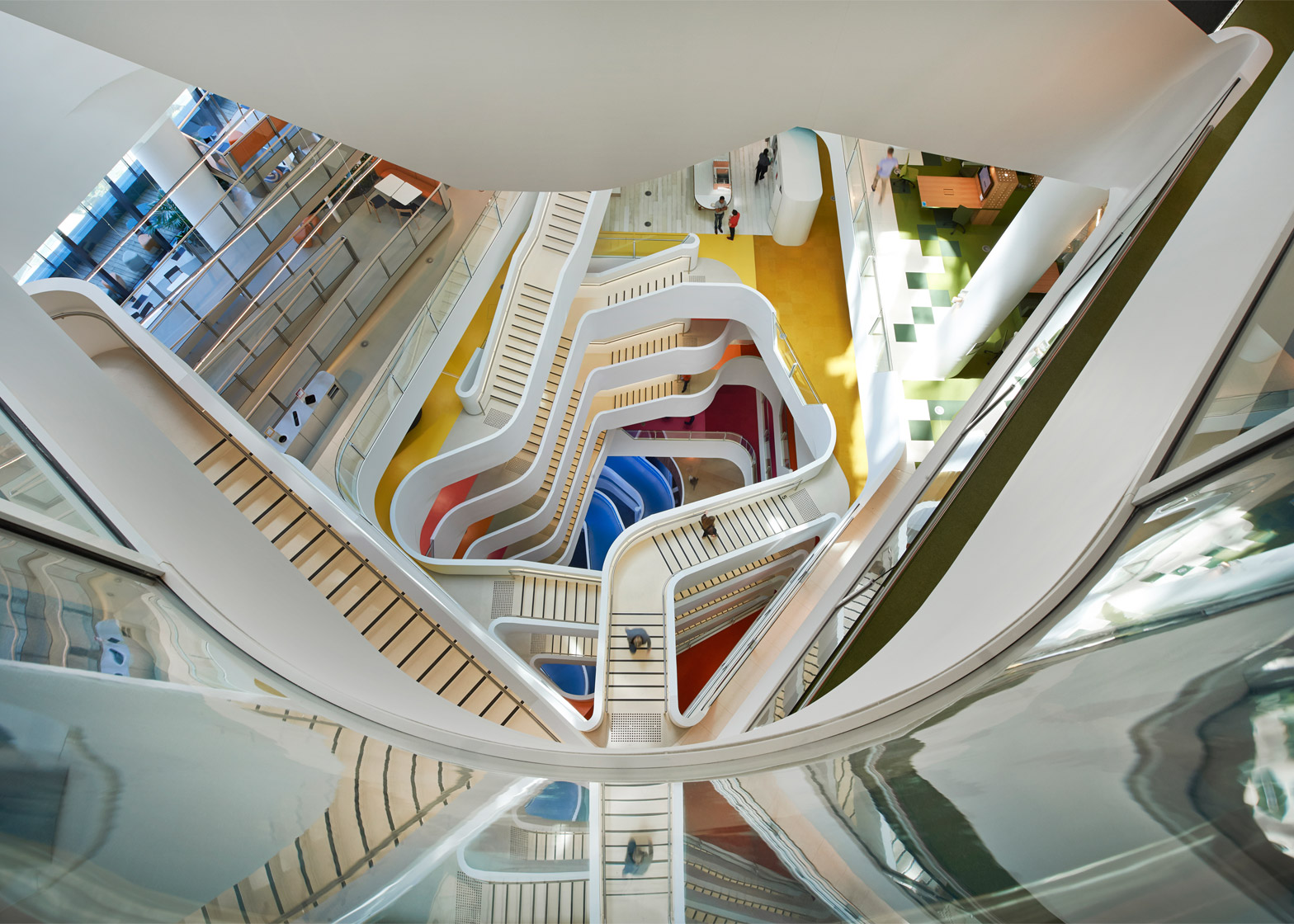Inside Festival 2015: Australia's booming economy is forcing companies to invest in innovative interior design in order to attract and retain staff, according to the winner of the Offices category at this year's Inside Festival.
Corporations and institutions are competing for talent and using design quality as a key tool, said Rob Backhouse, managing director of architecture firm Hassell.
"There is a lot of innovation in workplace design in Australia," Backhouse told Dezeen. "A sense of competitiveness has kicked off between banks, insurance companies and now IT companies."
"Australia hasn't had a recession," he added. "It's had 24 years of continual growth. So competing for the best talent, whether you're a law firm, a bank, an architectural firm, is a serious issue. A lot of these organisations see their workplace environment as a key part of their offer."
Australian designers featured heavily among the winners at Inside, the interior design festival that ran alongside the World Architecture Festival in Singapore last week.
The overall winner was the lobby and bar at Hotel Hotel in Canberra by Melbourne office March Studio, while Australian firm Cox Rayner Architects won the health and education category for its University of Queensland Oral Health Centre.
Hassell won the Offices category for the Medibank building in Melbourne – a new headquarters for the former state-owned insurance company that was recently privatised.
The company wanted its new building to help it transform its working practices and encourage healthy and collaborative working.
The 22-storey tower features a park, indoor football pitches and tennis courts, demonstration kitchens and a "plaza" in the middle of the building where staff can get together. The plaza features healthy-eating outlets, a bar and even a barbecue and a working fireplace.
"Organisations in Australia are quite competitive around the quality of their workplaces," Backhouse said. "There's a degree of bravery and willingness to try things."
Interior design is now often considered more important than architecture, Backhouse said, as tenants force developers to provide high-quality workplaces.
"Workplace projects in Australia have become very competitive around attracting tenants," he said. "What's evolved around the last 15 years is quite detailed functional and aspirational workplace briefs, which are often more about the interior of the building."
"Tenants are coming to the market and telling developers they don’t want a dumb box, they want real detail and difference," he added. "Workplace interiors are driving commercial interiors in Australia now."
Hassell and fellow large Australian architecture firms BVN and Woods Bagot – which was also won an Inside category – are among practices benefitting from the dynamic market, Backhouse said.
"Interior design has been really pushing the boundaries on big commercial jobs such as hospitals and education buildings that you'd think might be quite conservative," he said. "There's a momentum around it."
A survey of Medibank staff found that 79 per cent said their new building made them feel more collaborative, 70 per cent said they felt healthier and 66 per cent said they felt more productive. The company also reported a five per cent reduction in absenteeism since the move to the new headquarters.

